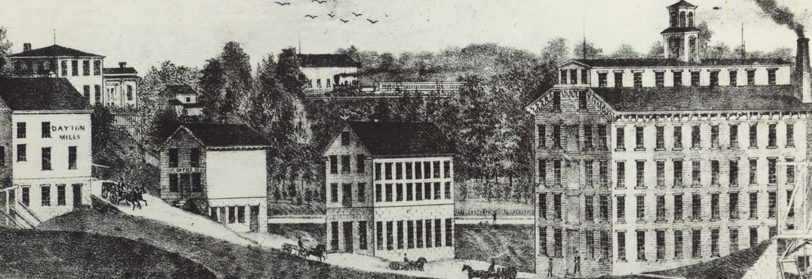Charles Hayward was born April 8, 1808 and grew up in Lebanon, Connecticut. He moved to Cleveland, Ohio, in 1818, and in 1835 or 36 he moved to La Salle County, one of its oldest settlers. He bought farmland, some of which was in Dayton township (highlighted above). In addition to farmland he also owned lots in Ottawa, Peru, Marseilles, and La Salle.
He served as School Commissioner of the county. He also built the Fox River House in Ottawa, which he kept for a few years being also interested in merchandising. His business affairs met with well deserved success. In 1847, Charles sold his business interests in Ottawa and moved to the Dayton farm. He had carried on farming the whole time they lived in Ottawa. By the time of his death, July 20, 1849, he was a wealthy landowner, his land being valued at more than $17,000.
His wife was Miss Julia Ann Mason, who was born in Cortland County, New York, on July 22, 1819, the daughter of Oliver and Sarah (Thayer) Mason. Charles and Julia were married in Ottawa on October 8, 1838. They had three children:
Estelle J, born December 11, 1839 on the farm in Dayton township, died October 1,1918 in Ottawa. She never married. When she died her estate was valued at $113,000, with $94,000 in real estate.
George, born April 18, 1843, died March 1, 1906 in Ottawa. He married Nettie Strickland on June 17, 1875. They had 3 children: Edith, married George Gleim; Mabel; De Alton
Emma/Emily Julia, born Nov. 5, 1846, died August 4,1920, married David Lafayette Grove [d 1897] on October 21, 1880. They had two children: Louise; Chester
After Charles’ death, Julia married Henry J. Reed on December 18, 1851. They had one son, Charles.
The interesting thing about all this for me is that some of Charles Hayward’s land, the land later owned by Emma Grove, is right next to our family farm, the original John Green property, which my sister and I still own. Also, David Grove is my 1st cousin 3 times removed.
Which just goes to prove my contention that everyone connected with early Dayton is related to everyone else.




